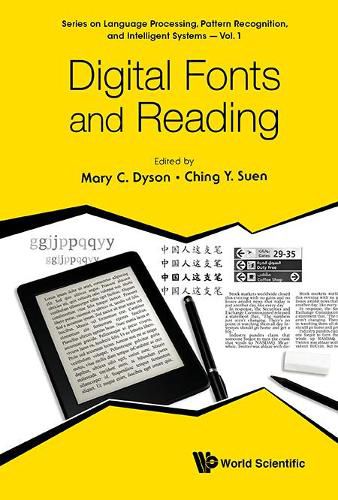Readings Newsletter
Become a Readings Member to make your shopping experience even easier.
Sign in or sign up for free!
You’re not far away from qualifying for FREE standard shipping within Australia
You’ve qualified for FREE standard shipping within Australia
The cart is loading…






The book is a collection of invited chapters by renowned experts and is part of a series on Language Processing, Pattern Recognition, and Intelligent Systems. The content is wide-ranging, encompassing perspectives from computer science to social science to design and reflecting the considerable experience of researchers, teachers and practitioners. This diversity offers rigorous approaches to the topic of Digital fonts and reading, organised in four sections: vision and reading; scientific approaches to reading; perspectives on type design practice; and using type. The heavily illustrated text includes original research, case studies, reviews, and practical advice, serving as a useful handbook or reference to inform design for reading. Traditionally, there has been a separation between researchers and practitioners, with different agendas. This book bridges the gap between scientific testing and design experience and considers the reader’s perspective. The collection aims to resonate with academics and students, experienced or novice typographic or interface designers and software engineers, and engage with anyone who has an interest in type and reading.
$9.00 standard shipping within Australia
FREE standard shipping within Australia for orders over $100.00
Express & International shipping calculated at checkout
The book is a collection of invited chapters by renowned experts and is part of a series on Language Processing, Pattern Recognition, and Intelligent Systems. The content is wide-ranging, encompassing perspectives from computer science to social science to design and reflecting the considerable experience of researchers, teachers and practitioners. This diversity offers rigorous approaches to the topic of Digital fonts and reading, organised in four sections: vision and reading; scientific approaches to reading; perspectives on type design practice; and using type. The heavily illustrated text includes original research, case studies, reviews, and practical advice, serving as a useful handbook or reference to inform design for reading. Traditionally, there has been a separation between researchers and practitioners, with different agendas. This book bridges the gap between scientific testing and design experience and considers the reader’s perspective. The collection aims to resonate with academics and students, experienced or novice typographic or interface designers and software engineers, and engage with anyone who has an interest in type and reading.